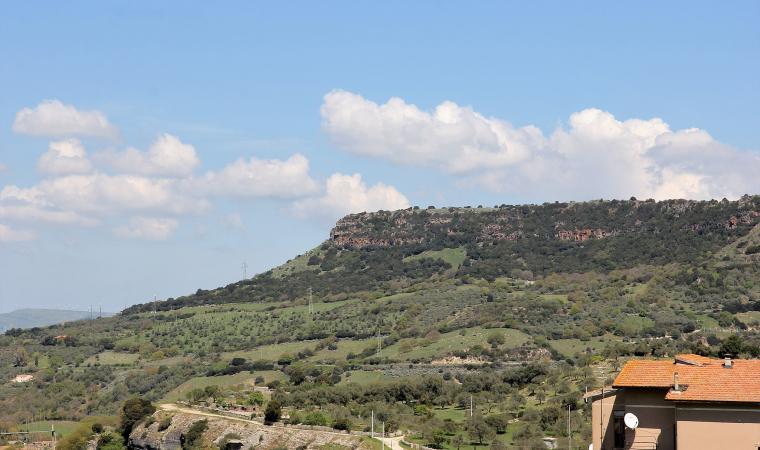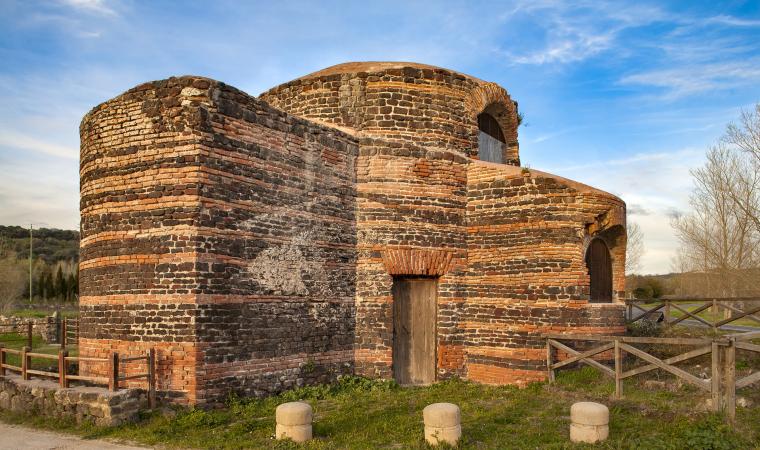Siligo reaches a height of 400 metres on the slopes of Monte Sant’Antonio, an offshoot of Monte Pelao, on which stand the ruins of a Nuragic sanctuary and a castle. Siligo is a small Logudorese village with 900 inhabitants positioned at the centre of an extraordinary landscape, comprised of extinct volcanoes, the volcanic craters of the Meilogu, a natural monument since 1994. The panorama, featuring calcareous and basalt highlands, some quite pointed, other rounded and flattened, is perfect for excursions. Montiju Tundu, Badde Ortolu, Sas Baddes offer views of ‘terraced’ valleys formed by the erosion of the streams. Amongst the finds are testimonies to the extraordinary eruptive activity of 500-600 thousand years ago that see the Monte Santu rise up in its truncated conical shape, on which stands the Chiesa dei Santi Elia e Enoch, which was donated to the Benedictines of Montecassino (11th century), and Monte Ruju, where volcanic dikes deriving from the cooling of lava along narrow rocky fractures can be spied. On the mountain, in the locality of Biddanoa, one highlight is the Chiesa di Nostra Signora di Mesumundu, also known as Santa Maria di Bubalis, built at the end of the 6th century on the remains of a Roman thermal structure and modified by the Sant’Elia monks. Today, it has a central base covered by a hemispherical dome and lateral structures.
A village in the heart of the Logudoro-Meilogu region, thirty kilometres from Sassari in the north-west of Sardinia, Siligo was once the cradle of prehistoric civilisations and is today one of fervent culture
See this place because...
A ‘cradle’ of the Nuragic civilisation, immersed in a rich territory dotted with extinct volcanoes can be explored, along with a medieval village embellished with ancient churches.







